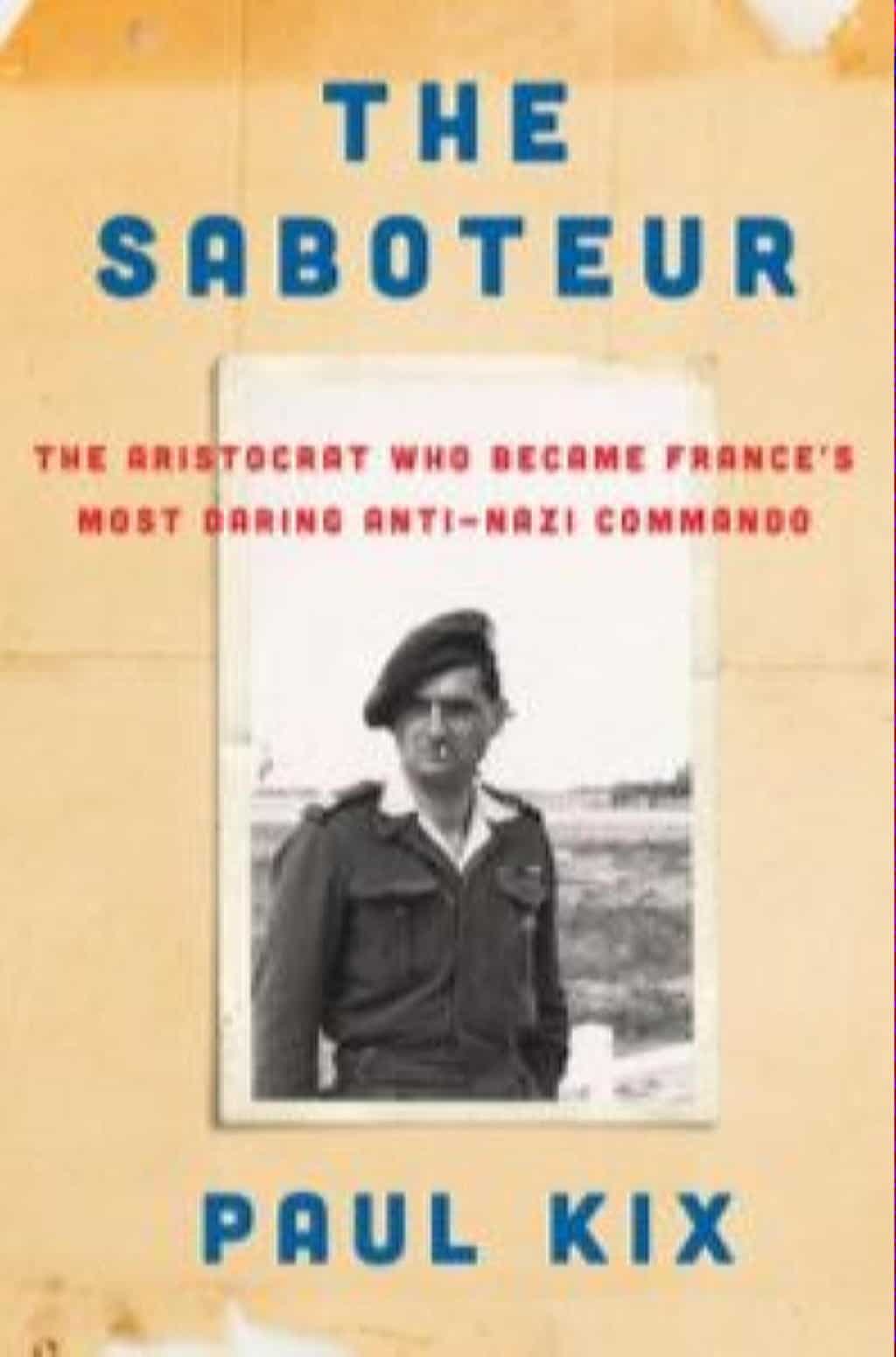 A World War II Hero of the French Resistance
A World War II Hero of the French Resistance
By Marcia Allen, Technical Services and Collections Manager
Among the many true tales of courage exhibited during World War II, Paul Kix’s The Saboteur is a standout. It’s a resistance story of a young Frenchman’s unwillingness to accept Nazi domination. While the young man’s adventures seem to stretch the limits of credibility, his experiences are documented in historical accounts. Let me tell you what makes this book so special.
Robert de La Rochefoucauld was born into wealth. His family had a long history of interactions with the royalty of France, and his parents owned a beautiful chateau. He attended the best of schools, including a Catholic boarding school located near Salzburg, Austria. During the 1930’s, he had a chance meeting with Adolph Hitler when a group of schoolboys hiked up to Kehlsteinhaus (Eagle’s Nest) to see what it was like.
The Nazi invasion of France changed Robert’s world. The chateau was occupied by Nazi officers, and Robert’s father was imprisoned. The young man had a burning desire to help the French cause. He wasn’t quite sure how to go about it, but he began making plans. He was only 19.
He felt his best chance for resistance would be a meeting with Charles de Gaulle. So, Robert snuck through Spain and went to England where de Gaulle held offices. Sine he wasn’t quite sure what to do with the young volunteer, de Gaulle decided to put Robert in touch with the Special Operations Executive under Winston Churchill. Thus, Robert began a tortuous regimen of training that included skills like parachuting behind enemy lines, killing in hand-to-hand combat, and placing and detonating explosives, and even using a newspaper as a lethal weapon. Robert excelled at those skills and soon began training other recruits and going on secret missions himself.
His main goal being to disrupt Nazi operations, Robert sought out German officers to assassinate. He also disguised himself as a factory worker so that over time he could plant an elaborate network of explosives that razed the factory. Even he was surprised by the amazing success of that operation.
Of course those experiences took a terrible toll. Robert was captured twice during the war and was tortured for long periods of time. His first imprisonment was to end with execution by a rifleman, but he managed to escape from the truck that was transporting him to his execution. His second escape was even more miraculous, but he had the aid of loyal French citizens to spirit him away from dangerous territory.
In later years long after the war, Robert was invited to a formal presentation in his honor. For his service during the war, he was awarded the French Legion of Honor, one of the most noteworthy awards given to very few veterans. His wife and children began to learn the details of his wartime efforts, about which he had rarely spoken over the years.
What makes this book worth reading? First, it’s tale of incredibly bold courage on the part of a very young patriot. Robert was terrified of parachute jumps, but he realized that such feats had to be done. He also clearly knew what would happen should he be captured, as his first imprisonment was an excruciating experience that nearly broke him. Second, there’s the nature of the book. The story reads like the best fictional spy thrillers, but its lengthy bibliography of primary sources convinces the reader that this all really occurred. Third, there is a rich appeal to a variety of readers. The book is a personal family story, a historical account of war, and a revelation about the workings of resistance networks. You won’t want to miss this captivating biography.

